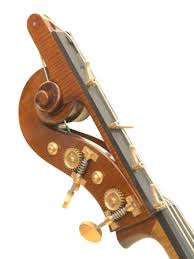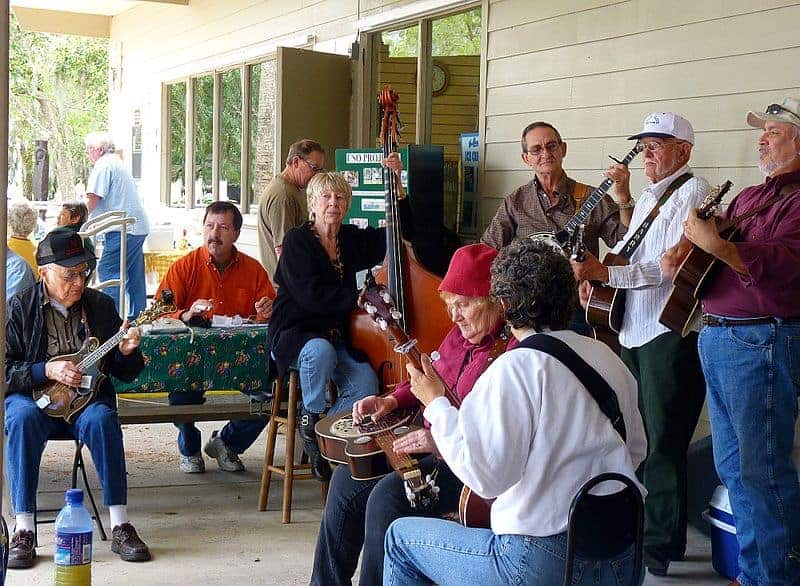Bluegrass has a tradition all of its own and its proponents have some of the most conservative views as to what a bass should sound and look like. Yet set against this tradition can be seen waves of musical evolution and indeed new political voices taking to Bluegrass. 2019 saw the Punch Brothers receive a Grammy for their album All Ashore. If you have been inspired by a new direction and feel Bluegrass is for you you may be wondering what sort of bass or double bass is best.
Choice of Bass
To jump in at the beginning we will consider what type of double bass options are out there for Bluegrass music. If you hang around a lot of Bluegrass circles, you’ll soon hear the mention of the Kay bass. Kay’s are certainly one of the most common choices for double bass. The Kay, however, is well known for its slender neck which gives it a potential joint weakness.
I have seen a professional fix on a kay bass where they removed the fingerboard and routed out a length of the neck and placed a rod in position to support the neck. The fingerboard is then glued back on. The bass played and sounded great despite the changes. I saw this on a friends Kay bass in Mobile Alabma. The neck was really thin and more like a fender precision neck to play. The truss rod which had been inserted by a luthier to give strength to the bass neck and allowed the neck to be skimmed thinner.
The next obvious choice would be a used Eberle. Laminate basses are very common in Bluegrass circles so they would be fine also.
The Correct Set-Up of a Bluegrass Double Bass
All basses, of course, are different and will need to be set-up correctly for your intended genre and playing style. Then the bass will have good promise to give you the sound needed. For example, an inexpensive bass with a correctly positioned soundpost with an upgraded fingerboard will be improved on. Additionally, a high-quality bridge which is cut so that it will sit properly is important. An easy win would be to ensure that a good quality set of strings is used. All of these elements combined will make a huge difference to a low priced bass.
String Set-Up For Bluegrass
The mainstay Bluegrass bass setup of yesterday was to position the strings high 12mm or higher on a plywood bass. Musicians favored a ‘thumpy’ percussive beat. This allowed for the slapping as well as the plucking of the bass.
New waves of Bluegrass have favored the use of solo strings on the top three, tuned A, E, B from top to bottom, with a C extension tuned. This extension is normally C open, E closed. Most have a C extension with chromatic stops.
The C extension means that it is possible to play down to a low C below the lowest E on the double bass. This extension is enabled with the addition of an extra piece of fingerboard that goes up to the scroll of the headstock, thereby extending the string length.

C Extension for a Double Bass
Alternatively, musicians sometimes detune the whole bass by one tone, so that the open strings become D, G, C, F instead of E, A, D, G.
In more recent times there has been a move from gut to synthetic or combination of sets of strings. Gut strings do tend to be more affected by atmospheric conditions such as humidity and heat and therefore can go out of tune more frequently.
The Fingerboard Set-Up for Bluegrass
Traditional Bluegrass playing, requires a moderate fingerboard with a minimal arch. A good luthier can skim or sand the fingerboard to the required level to enable the slap and give a lower smoother playing action if required. The nut and bridge can also be shaped for a proper Bluegrass playing action.
Approach To Learning Bluegrass
Most players begin by learning some standards, the essence of playing Bluegrass is less is more, the bass is acting simply as a timekeeper with subtle transitions. The fiddlers and are pickers are ‘the stars’ in Bluegrass.
The basslines themselves do not sound like much, the best way to play is with other instrumentalists.
The basslines in Bluegrass are usually two to the bar, and the first note of the two is usually the root note of the chord and the second note is usually the fifth of the major scale of the chord.
Most Bluegrass is usually around the 1-4-5 chord structure. If the song is in the key of E, the 1-4-5 system would be 1-E, 4=A and 5=B.
The essence of Bluegrass bass is to set the pace, never speeding up or slowing down. The bass player is there to provide the foundation for the soloists, which is a classic bass player role.
Can Electric Bass Play Bluegrass?
Traditional Bluegrass has a rooted traditional sound and visuals that includes the use of a double bass, so the purist approach would always be to shy away from the thought of using an electric double bass.
The answer to the question as to whether you could use an electric bass to play Bluegrass would be; yes it can, but why would you? There is something about the sound of the double bass which cannot be replaced with electric bass.
If you want to play Bluegrass and simply do not have a double bassist then, of course, go ahead and have some fun. There have been plenty of successful Bluegrass bands playing electric bass over the last 30 years. The opportunity is there to make up your mind as to what you are intending to do as a musician and band.
There are ways to get an electric bass to sit well in a Bluegrass setting if you play around with your playing style, tone rolled back a bit and perhaps consider the use of flatwound strings. The Kala u-bass is possibly also going to give you another alternative option if you do not have or could play a double bass. Some examples of electric bass Bluegrass:
New Grass Revival band, Johne Cowan, Jim & Jesie, The Osborne Bros, The Country Gentlemen, Doc Watson, Mac Watson, Mac Wiseman, Earl Scruggs Review, Third Tyme Out, Doyle Lawson & Quicksilver, Knoxville Grass, Hot Rize. Béla Fleck.
Bluegrass Resources
Bluegrass Bass by Ned Alterman and Richie Mintz
Learn to Play Bluegrass Bass by Mel Bay
Bluegrass Bass Favorites (eBook) by Fred Neumann
Wayfaring Strangers: The Musical Voyage from Scotland and Ulster to Appalachia by Fiona Ritchie (Author), Doug Orr (Author)
Bluegrass Bands
This list could go on a very long time, these names are just scratching the surface to get you started:
Bill Monroe, Flatt and Scruggs and the Foggy Mountain Boys, Stanley Brothers, Del McCoury, Union Station, Jason Moore, Mike Bub. Mark Fain with the John Jorgenson Bluegrass band. Travis Book, Dennis Crouch (check out this interview with Dennis), Todd Phillips, Mark Schatz (instructional Bluegrass video), Edgar Meyer, Barry Bales (part of an instructional DVD), Rob Wassermann, Roy Huskey, Tom Gray.
